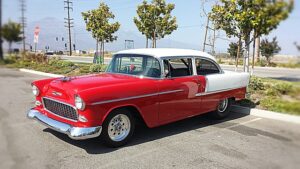Introduction
When it comes to maintaining your vehicle’s braking system, proper lubrication is essential for optimal performance and longevity. Brake pads play a crucial role in stopping your vehicle, and knowing where to lubricate them can help prevent issues such as noise, uneven wear, and reduced braking efficiency. In this article, we will explore the different areas where brake pads should be lubricated to ensure smooth and reliable braking.
Why lubricate brake pads?
Before we delve into the specific areas where brake pads should be lubricated, let’s understand why lubrication is necessary. Brake pads are in constant contact with the brake caliper and rotor, generating friction to slow down or stop the vehicle. Over time, this friction can cause the brake pads to stick or bind, leading to various problems.
Lubricating the brake pads helps to reduce friction and prevent them from sticking to the caliper or rotor. It also aids in dissipating heat, reducing noise, and promoting even wear. Proper lubrication ensures that the brake pads can move freely and maintain consistent contact with the rotor, resulting in efficient braking performance.
Where to lubricate brake pads
1. Backing plates: One of the crucial areas to lubricate is the backing plates of the brake pads. Apply a thin layer of high-temperature brake grease to the backing plates’ metal surface, ensuring complete coverage. This lubrication prevents the brake pads from sticking to the caliper or backing plate, allowing them to move freely.
2. Caliper slide pins/guides: The caliper slide pins or guides are responsible for allowing the caliper to move smoothly. Apply a thin layer of brake grease to the slide pins, ensuring they are well lubricated. This lubrication prevents the slide pins from seizing or sticking, ensuring proper caliper movement and even brake pad wear.
3. Caliper piston: Lubricating the caliper piston is crucial for ensuring smooth and even brake pad movement. Apply a thin layer of brake grease to the piston’s surface, taking care not to contaminate the brake pad material. This lubrication allows the brake pad to move freely against the piston, preventing binding and uneven wear.
4. Contact points: The contact points between the brake pad and caliper or piston should also be lubricated. Apply a thin layer of brake grease to these contact points, ensuring smooth movement and reducing noise. Be cautious not to apply excessive grease, as it can lead to contamination of the brake pad material.
Conclusion
Proper lubrication of brake pads is essential for maintaining the performance and longevity of your vehicle’s braking system. By lubricating the backing plates, caliper slide pins, caliper piston, and contact points, you can ensure smooth and reliable braking. Regularly inspecting and lubricating these areas will help prevent issues such as noise, uneven wear, and reduced braking efficiency.
Remember to use high-temperature brake grease specifically designed for this purpose and follow the manufacturer’s recommendations. If you are unsure about any details or the specific lubrication points for your vehicle, consult the vehicle’s owner’s manual or seek professional assistance.
References
– Brake & Front End: brakeandfrontend.com
– Popular Mechanics: popularmechanics.com
– Car Bibles: carbibles.com











